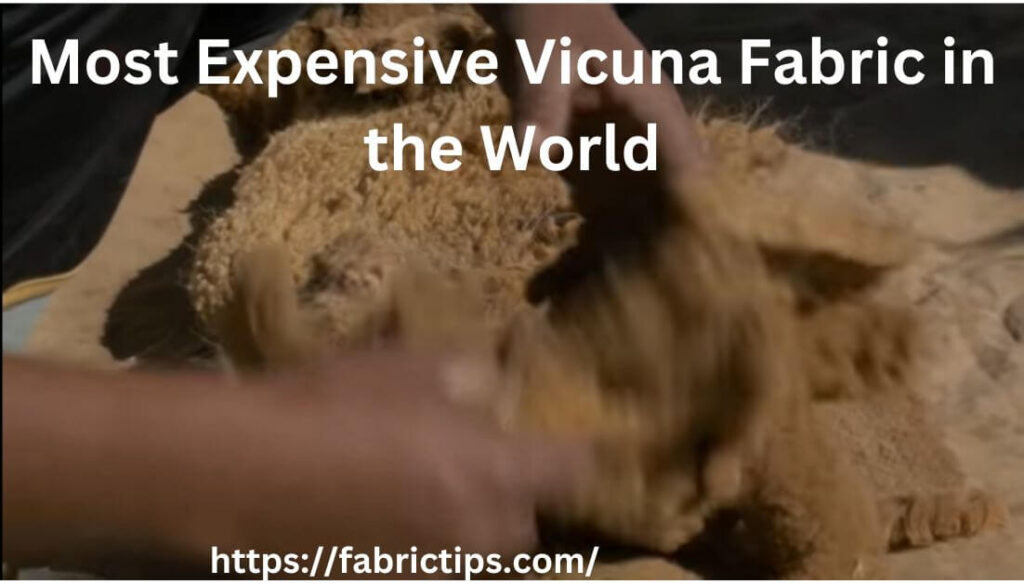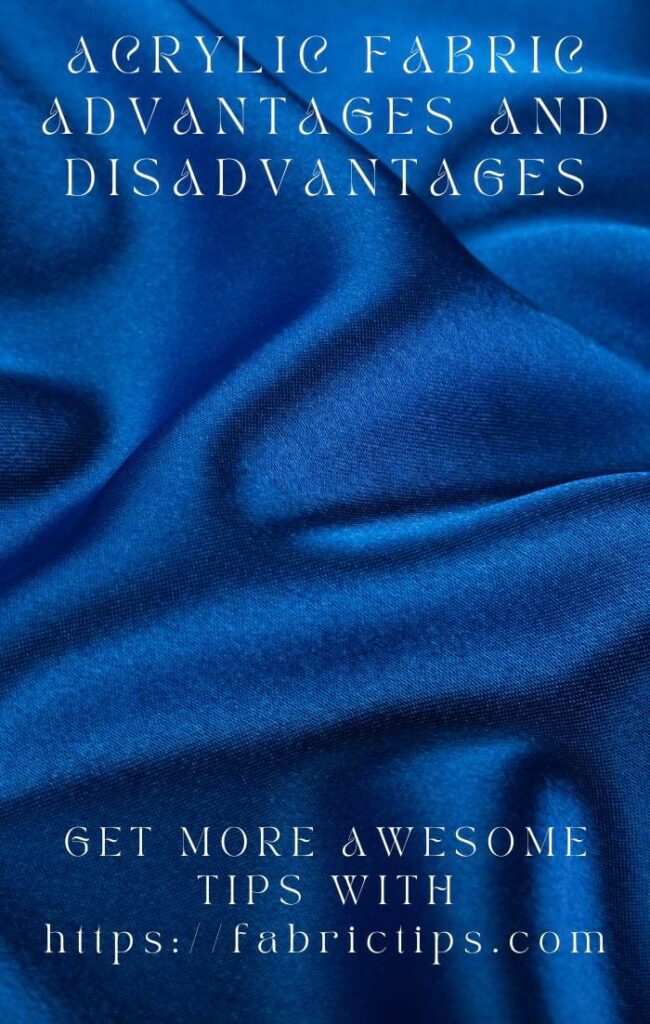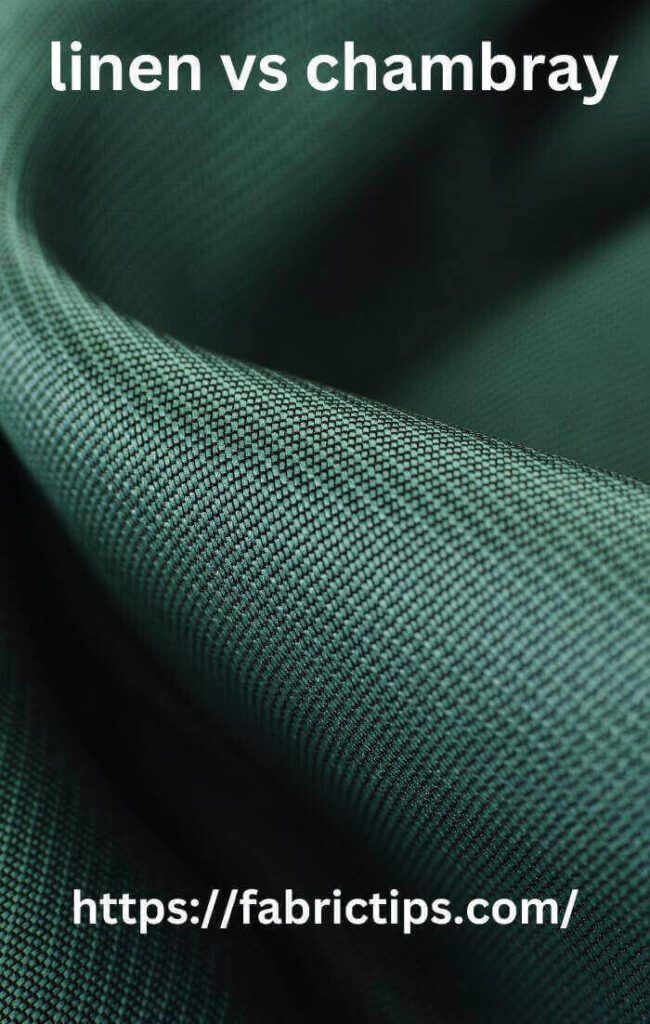Last Updated on December 13, 2025 by Wahid
In the realm of luxurious fabrics, Vicuna reigns supreme for many. Because of its softness and warmth, it is coveted for garments that embody elegance & comfort. One fabric has pushed the boundaries of luxury even further, holding the title of the most expensive fabric in the world: vicuña.
This comprehensive guide unveils the secret most expensive vicuña fabric, from its ancient origins in the Inca Empire to its modern-day applications. We’ll explore the characteristics that make vicuña so special, compare it to other luxurious fabrics like cashmere, & delve into the reasons behind its exorbitant price tag. Therefore, be prepared to be surrounded by the world of vicuña, a fabric fit for royalty crafted by nature.
What is Vicuña Wool?

That’s a concise and informative explanation of vicuña wool. Here’s how we can expand on it to create a more engaging introduction for your article:
- Imagine a fabric so soft it feels like a cloud against your skin, so light it practically floats, & yet so warm it can shield you from the harshest Andean winds. This isn’t a dream; it’s the reality of vicuña wool.
- Vicuña wool comes from the vicuña, a small, graceful camelid native to the high Andes Mountains of South America.
- Revered by the Incas for its golden fleece, vicuña wool boasts an unmatched level of fineness, softness, and lightness.
- However, what truly elevates vicuña to the status of the most expensive fabric in the world is its remarkable rarity and the sustainable harvesting methods employed to protect these majestic creatures.
Hence, this introduction uses vivid language to paint a picture of vicuña wool’s luxurious qualities. It also piques the reader’s curiosity by highlighting the reasons behind its exorbitant price tag.
Vicuna Fabric: An Overview
Vicuña fabric transcends the realm of mere textiles, transforming into a tangible embodiment of luxury. Here, we delve into the essence of vicuña, exploring its unparalleled characteristics:
- Luxurious Texture: Imagine a fabric that feels like a cloud caressing your skin. Vicuña boasts an unmatched softness, thanks to its incredibly fine fibers. This, combined with its lightweight nature, creates garments that are not only incredibly comfortable but also feel almost weightless. Yet, despite its gossamer feel, vicuña wool offers exceptional warmth, perfect for warding off the chill of a crisp evening.
- Exquisite Look: Vicuña fabric isn’t just about feeling divine; it’s a visual feast as well. The natural sheen of the fibers creates a subtle luster that adds a touch of elegance and sophistication to any garment. Unlike some plush fabrics, vicuña drapes beautifully, allowing for flowing silhouettes that exude timeless style.
- Rarity and Sustainability: Part of what elevates vicuña to such lofty heights is its remarkable scarcity. Vicuñas, the source of this precious wool, are rare animals found only in the high Andes. Unlike conventional wool harvesting, vicuña undergoes a unique, sustainable process that prioritizes the animal’s well-being. This ethical approach adds another layer of value to this already extraordinary fabric.
Next, we’ll explore the fascinating history of vicuña fabric, from its revered status in the Inca Empire to its role in modern-day luxury fashion.
History Behind the World’s Most Expensive Vicuña Wool
The story of vicuña fabric isn’t just about its luxurious qualities; it’s a captivating tale intertwined with cultural reverence, exploitation, & ultimately, a remarkable comeback.
- Inca Reverence: In the heart of the ancient Inca Empire, the vicuña held a sacred status. Considered a gift from the divine, these graceful camelids roamed freely in the high Andes. Their golden fleece, incredibly fine and soft, was reserved exclusively for Inca royalty, symbolizing not just wealth, but a connection to the divine.
- Spanish Exploitation: The arrival of the Spanish conquistadors in the 16th century marked a dark chapter. Vicuñas were mercilessly hunted for their coveted wool, their populations plummeting towards extinction. Driven by greed and a lack of respect for the delicate balance of the Andean ecosystem, the Spanish nearly drove these magnificent creatures off the face of the earth.
- Conservation Triumph: Thankfully, the story doesn’t end there. Recognizing the ecological & cultural significance of the vicuña, international conservation efforts were launched in the mid-20th century. These efforts, focusing on sustainable harvesting practices and habitat protection, have brought the vicuña population back from the brink. Today, vicuñas are a symbol of hope and a testament to the power of international cooperation in preserving nature’s wonders.
However, this remarkable journey from sacred Inca symbol to near extinction and back to a sustainable future adds another layer of depth & intrigue to the already captivating story of vicuña fabric.
Features & Characteristics of Vicuña Wool Fabric
Vicuña fabric isn’t just expensive; it boasts a unique set of characteristics that elevate it to a class of its own. Let’s delve into the science behind the luxury:
- Unmatched Fineness: Imagine cashmere, the epitome of softness. Now, imagine something even finer. Vicuña fibers boast a diameter of just 6-12 microns, making them some of the finest animal fibers in existence. This translates to a fabric that feels unbelievably soft and smooth against the skin, surpassing even the most luxurious cashmere.
- Exceptional Warmth, Weightless Comfort: Despite its incredibly lightweight nature, vicuña wool is surprisingly warm. This magic lies in the unique structure of its fibers. Vicuña wool features hollow cores that trap air, creating a natural insulating layer that keeps you warm without feeling bulky.
- Natural Sheen for Effortless Elegance: Vicuña fabric isn’t just about unparalleled comfort; it possesses a captivating visual quality. The natural sheen of the fibers creates a subtle luster that adds a touch of sophistication and elegance to any garment. Unlike some plush fabrics, vicuña drapes beautifully, allowing for flowing silhouettes that exude timeless style.
- Durability with Delicacy: While vicuña is undeniably delicate, it’s not as fragile as one might expect. The strong fibers used in vicuña garments, when cared for properly, can last for years. However, due to the delicate nature of the fabric, special care instructions are vital for maintaining its beauty and longevity.
In the next section, we’ll explore the ways this luxurious fabric is utilized, from high-end clothing to coveted collectibles.
Exploring the Uses of Vicuña Cashmere Wool
The rarity and value of Vicuña Cashmere Wool naturally limit its applications. However, for those fortunate enough to own a piece of the most expensive Vicuna fabric, it becomes a treasured possession:
- High-End Clothing: The primary domain of vicuña wool is the realm of bespoke tailoring. Vicuña suits, jackets, coats, and scarves represent the pinnacle of luxury fashion. These garments are not just incredibly soft & warm but exude an air of sophistication and exclusivity. Owning a vicuña piece is a statement, a declaration of discerning taste and appreciation for the finer things in life.
- Collectible Textiles: Vicuña’s rarity elevates it beyond mere clothing; it becomes a collector’s dream. Limited-edition garments or accessories crafted from vicuña wool are coveted by fashion enthusiasts and textile collectors worldwide. These pieces are not just about function; they represent a piece of textile history and a testament to the exquisite craftsmanship involved in working with such a precious material.
- Investment Pieces: Due to its limited availability and timeless appeal, vicuña clothing can be seen as a sound investment. The value of vicuña garments tends to be appreciated over time, making them a unique asset for discerning collectors.
Thus, owning a piece of Vicuña Cashmere Wool isn’t just about acquiring a garment; it’s about experiencing a piece of luxury steeped in history, sustainability, & unparalleled craftsmanship.
What Makes Vicuña the Undisputed King of Fabrics?
Vicuña may share the stage with other luxurious fabrics like cashmere, but it reigns supreme for several key reasons:
- Unmatched Rarity: Cashmere production, while limited, pales in comparison to vicuña. Vicuñas are wild animals with much smaller populations, and ethical harvesting practices further restrict the amount of wool available. This scarcity is a major contributor to vicuña’s astronomical price tag.
- Sustainable Practices, Ethical Appeal: Unlike conventional wool harvesting, which can be harsh on sheep, vicuña undergoes a unique process called “chacu.” This involves herding the animals into enclosures, gently shearing them, and then releasing them back into the wild. This sustainable approach ensures the well-being of the vicuña and adds an ethical dimension to the fabric’s value.
- A Touch Beyond Softness: Cashmere is renowned for its softness, but vicuña takes it to another level. Vicuña fibers boast a diameter of just 6-12 microns, making them even finer than cashmere. This translates to a fabric that feels unbelievably soft and smooth against the skin, an unparalleled experience that truly sets it apart.
Ten Most Expensive Fabrics: Putting Vicuña in Context

To truly appreciate vicuña’s position, let’s compare it to other luxurious fabrics:
- Vicuña Wool
- Shahtoosh (illegal due to endangerment of Tibetan antelope)
- Sea Silk (derived from rare bivalves)
- Baby Alpaca Wool (finest grade of alpaca wool)
- Cashmere Wool
- Musk Ox Qiviut (underfur of musk ox)
- Spider Silk (extremely difficult and time-consuming to produce)
- Linen Byssus (derived from a specific type of mussel)
- Egyptian Cotton (prized for its long staple fibers)
- Chinese Golden Cashmere (rare blend of cashmere wool)
As you can see, vicuña sits at the pinnacle of this list. Its combination of extreme rarity, ethical harvesting, & unparalleled softness solidifies its position as the most expensive and luxurious fabric in the world.
Caring for Vicuña Fabric: A Touch of Tenderness
Vicuña’s exquisite nature demands a touch of tenderness when it comes to care. Here are some key guidelines to ensure your vicuña garment maintains its beauty for years to come:
- Dry Cleaning Only: Avoid washing vicuña garments at home. Opt for professional dry cleaning services that specialize in handling delicate fabrics.
- Store with Care: When not in use, store your vicuña garment in a cool, dry place away from direct sunlight. Use a padded hanger to prevent any sagging or misshaping.
- Minimize Friction: Vicuña is susceptible to pilling. Avoid excessive rubbing or friction, and be mindful when carrying bags or wearing backpacks over your vicuña garment.
Yes, by following these simple steps, you can ensure your vicuña piece retains its luxurious feel and appearance for years to come.
Where to Buy Vicuña Fabric (or Clothing):
Due to the rarity and regulations surrounding vicuña wool, finding genuine vicuña garments can be a challenge. Here are some trustworthy sources to consider:
- Reputable Tailors: Look for established tailors specializing in high-end fabrics. They may offer custom-made vicuña garments or source ready-made pieces from reputable vicuña producers.
- Luxury Boutiques: Exclusive boutiques catering to a discerning clientele may carry a limited selection of vicuña garments or accessories.
- Auction Houses: For a truly unique experience, consider high-end auction houses specializing in rare textiles. Vicuña garments can occasionally appear in such auctions, offering a chance to acquire a piece of textile history.
Always remember to verify authenticity. Look for certificates from reputable organizations that ensure the vicuña wool was ethically sourced.
Vicuña vs. Baby Alpaca: Understanding Nuances of Luxury
Both vicuña and baby alpaca are associated with luxury, but there are distinct differences:
- Origin: Vicuña comes from the vicuña, a wild camelid native to the high Andes. Baby alpaca wool comes from young alpacas, domesticated animals raised for their fleece.
- Rarity: Vicuña wool is significantly rarer and more expensive than baby alpaca wool.
- Fiber Fineness: Vicuña fibers are finer than baby alpaca fibers, resulting in an even softer and lighter feel.
- Sustainability: Both vicuña and baby alpaca wool can be ethically sourced. However, due to the wild nature of vicuñas, the “chacu” harvesting process requires more effort and specific regulations.
When choosing between vicuña and baby alpaca, consider your budget & desired level of exclusivity. Both offer exceptional softness and warmth, but vicuña provides the ultimate luxury experience.
Rarest of the Rare: Unveiling Vicuña’s Exclusivity
Vicuña’s reign as the most expensive fabric isn’t just about price; it’s about its unparalleled rarity. While it holds the crown, there are a few contenders worthy of mention:
- Shahtoosh: Woven from the underfur of the Tibetan antelope, Shahtoosh boasts an unmatched level of softness. However, due to the critically endangered status of the antelope, Shahtoosh’s production is illegal, making it a fabric shrouded in controversy.
Vicuña vs. Cashmere: A Tale of Two Luxuries
Cashmere, often synonymous with luxury, might leave you wondering: why is vicuña so much more expensive? The answer lies in a combination of factors:
- Rarity: Vicuña populations are significantly smaller than cashmere goats. Additionally, vicuña wool can only be harvested every two to three years, compared to the annual shearing of cashmere goats.
- Ethical Harvesting: Cashmere harvesting methods can vary, with some farms employing questionable practices. In contrast, the chacu process for vicuña ensures the animal’s well-being, adding to the ethical appeal and limited production of vicuña wool.
- Fiber Fineness: While both fabrics are incredibly soft, vicuña fibers are even finer than cashmere, resulting in a noticeably softer and lighter feel.
Ultimately, these factors combine to create a perfect storm of exclusivity, pushing vicuña to the top of the luxury fabric pyramid.
FAQs
Here are 10 commonly asked questions about vicuña fabric, the most expensive fabric in the world:
Q-1: What is vicuña fabric made from?
Answer: Vicuña fabric is made from the wool of the vicuña, a small, camelid-like animal native to the high Andes Mountains of South America.
Q-2: Why is vicuña fabric so expensive?
Answer: Several factors contribute to vicuña’s high cost:
- Rarity: Vicuñas are wild animals with much smaller populations compared to domesticated animals like cashmere goats.
- Sustainable Harvesting: Vicuña wool is harvested through a unique, ethical process called “chacu” that prioritizes the animal’s well-being, limiting production.
- Fiber Fineness: Vicuña fibers are some of the finest in the world, creating a fabric of unmatched softness and lightweight warmth.
Q-3: Is vicuña fabric warmer than cashmere?
Answer: Vicuña wool offers exceptional warmth despite being lightweight. While both cashmere and vicuña are warm, vicuña’s hollow fibers trap air more effectively, offering slightly better insulation.
Q-4: Is vicuña fabric itchy?
Answer: No, vicuña fabric is known for its incredible softness due to its incredibly fine fibers. It’s significantly softer than cashmere and unlikely to cause any itchiness.
Q-5: Is vicuña fabric durable?
Answer: Vicuña fibers are strong, but the fabric is delicate due to its lightweight nature. Proper care, like dry cleaning only, is essential for maintaining its beauty and longevity.
Q-6: What kind of clothes are made from vicuña fabric?
Answer: Vicuña wool is primarily used for high-end clothing like bespoke suits, jackets, coats, and scarves. Its rarity also makes it a coveted material for collectible garments and accessories.
Q-7: Is vicuña fabric ethical?
Answer: Yes, vicuña wool harvesting is considered ethical. The “chacu” process ensures minimal stress on the animals and allows their populations to thrive.
Q-8: How can you tell if vicuña fabric is real?
Answer: Genuine vicuña garments should come with a certificate of authenticity from a reputable organization verifying the ethical sourcing of the wool.
Q-9: Where can you buy vicuña fabric?
Answer: Finding genuine vicuña products can be challenging due to rarity and regulations. Look for reputable tailors specializing in high-end fabrics, luxury boutiques, or high-end auction houses specializing in rare textiles.
Q-10: Is vicuña fabric a good investment?
Vicuña garments can be seen as an investment due to their limited availability and timeless appeal. Their value is often appreciated over time. However, the high cost makes it an investment for a very select clientele.
Conclusion: Enduring Legacy of Vicuña
The journey of the most expensive Vicuna fabric is a captivating tapestry woven with threads of history, sustainability, & unparalleled luxury. Vicuña’s reign supreme isn’t simply a matter of price; it’s a testament to its remarkable qualities. Its unmatched fineness surpasses even the luxurious softness of cashmere, while its lightweight nature belies its exceptional warmth. More importantly, the sustainable “chacu” harvesting process ensures the well-being of the vicuña, adding an ethical dimension to this exquisite fabric.
Finally, while the exorbitant price tag may limit its accessibility, vicuña remains a symbol of timeless luxury and a delicate balance between human desire & environmental responsibility.


